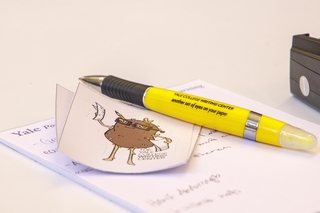Citation Styles: In-Text vs Footnotes
There are two main categories of citation styles: “in-text” citations and footnotes. For in-text citations, you give some information about the source directly after the quotation, but leave the rest to a list of References (APA) or Works Cited (MLA) at the end of the paper.
MLA and APA Citations
MLA style, defined by the Modern Language Association, is most common in the humanities. Because humanities research highlights how one piece of writing influences another, MLA style emphasizes the author’s name and the page in the original text you’re using. This information allows scholars to track down easily the exact sentences you’re analyzing.
APA style, defined by the American Psychological Association, is most common in the social sciences. Although the author’s name is an important element in APA citations, this style emphasizes the year the source was published, rather than the page number, which allows a reader to see quickly how the research you’re writing about has evolved over time.
Note: Some works written with MLA or APA style also include what are called discursive footnotes. Rather than giving only the author and title of the sources, these notes discuss in a sentence or two some aspect of the evidence that is not part of the paper’s main argument. Discursive footnotes are also welcome in Chicago style, and many papers that use Chicago style footnotes will mix discursive footnotes with others that just give bibliographical information. See When You Must Cite for more information about this kind of footnote.
Chicago Style Citations
The alternative to in-text citation is to use footnotes, which give source information at the bottom of the page. The footnote style we demonstrate here is called Chicago style, defined by the University of Chicago. Chicago style is especially popular in historical research. When developing a historical explanation from multiple primary sources, using footnotes instead of inserting parenthetical information allows the reader to focus on the evidence instead of being distracted by the publication information about that evidence. The footnotes can be consulted if someone wants to track down your source for further research.
Chicago style is actually very flexible, and offers writers a choice of several different formats of footnote styles, provided that the result is clear and consistent. Because the primary advantages of using footnotes are simplicity and concision, this guide describes only one variation of Chicago style: shortened footnotes in a paper that gives a full Bibliography. What this means is that our examples of Chicago footnotes do not give full bibliographical information at the bottom of the page. Instead, our footnote examples give brief references that would be supplemented, at the end of the paper, with a full Bibliography.
If your teacher tells you to use Chicago style, or footnotes, you should check to see if the shortened format is acceptable. If you need to give the full citation, the format for each note is nearly identical to MLA format, except that a full footnote generally begins with the first name of the author. If in doubt, we suggest the shortened format (the one we demonstrate here) because it’s the most elegant. It’s also what the Chicago editors recommend.





